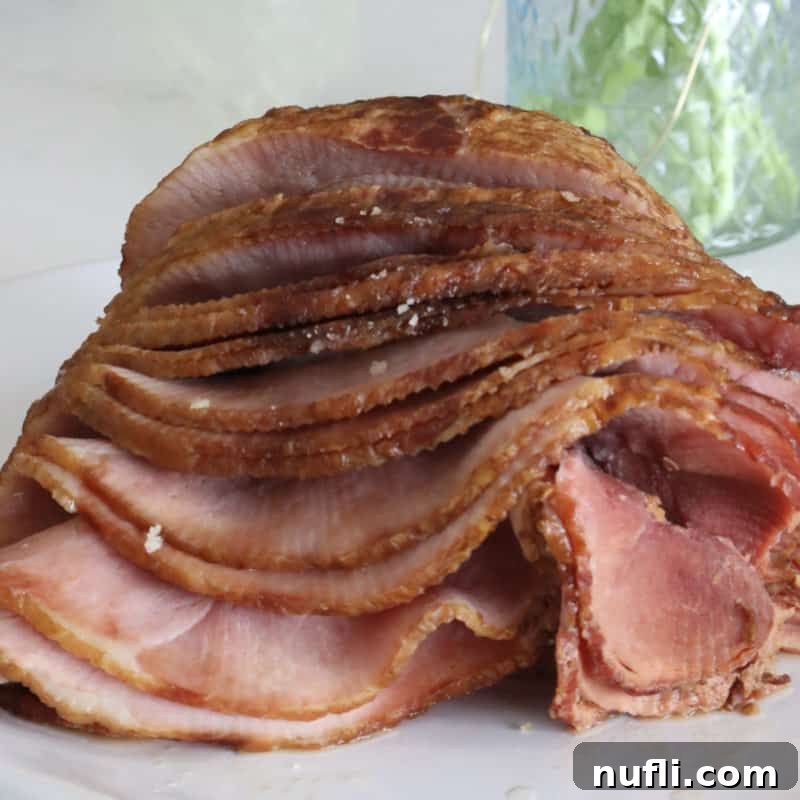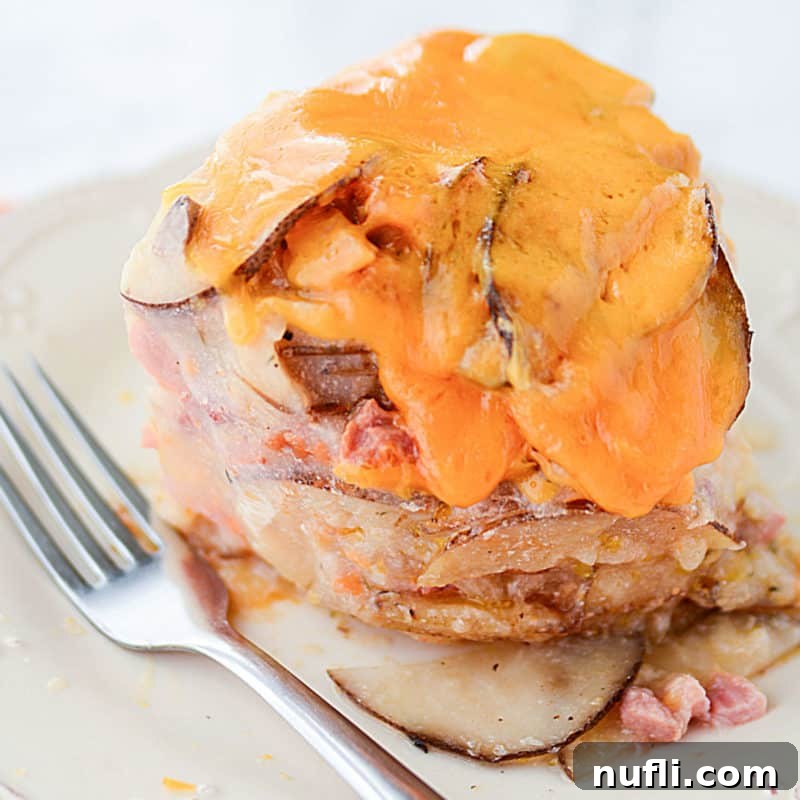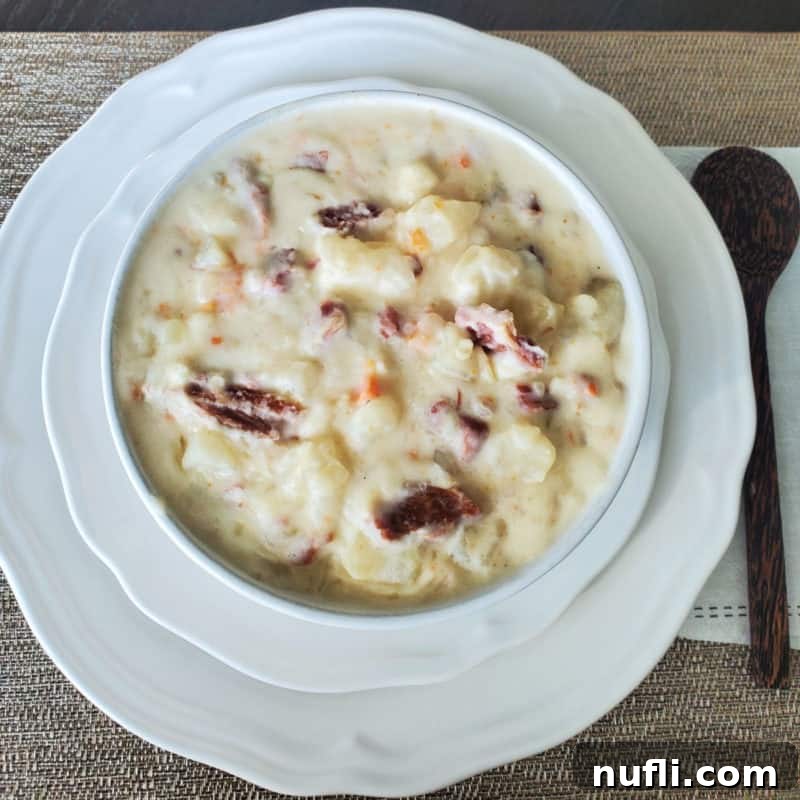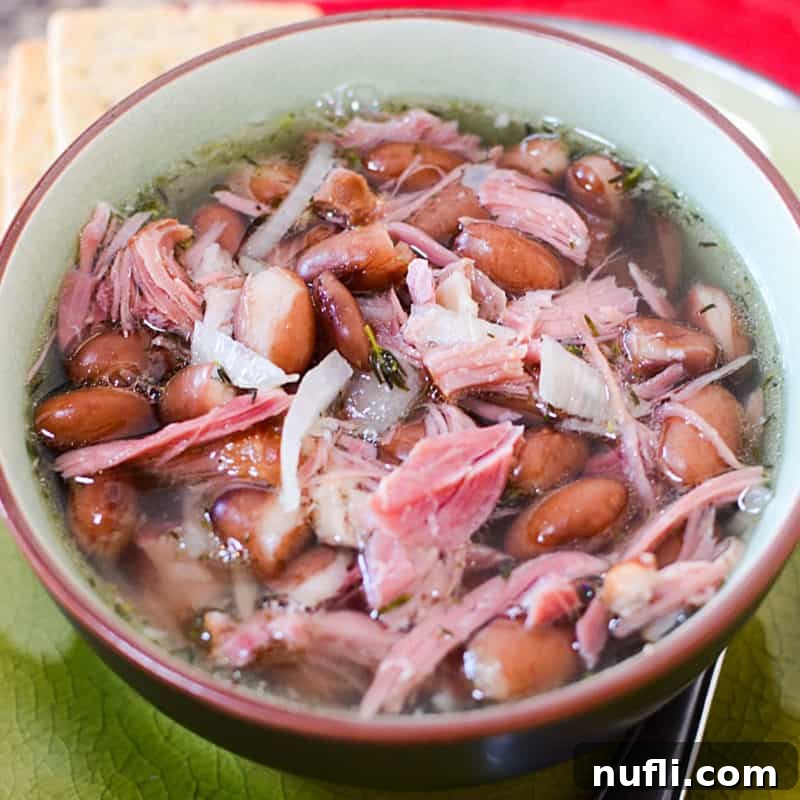The aroma of a perfectly roasted ham is a hallmark of festive gatherings – a centerpiece that brings families together for holidays like Christmas, Easter, and Thanksgiving. But once the festivities conclude, you’re often left with a substantial amount of delicious ham. While a second helping straight from the fridge is always a treat, the question inevitably arises: “What to do with all that leftover ham?” Don’t let your holiday ham go to waste! Instead, transform it into an array of exciting, flavorful meals that your family will adore. This comprehensive guide and collection of easy leftover ham recipes will ensure you make the most of every last succulent slice.

Maximizing Your Holiday Ham: The Ultimate Guide to Leftover Ham Recipes
The tradition of serving ham during festive seasons is deeply rooted in history, tracing back to ancient Nordic and Germanic Yuletide celebrations. In those times, the sacrifice of a wild boar was not just a feast but a ritual believed to promote fertility and guarantee a bountiful harvest in the coming year. As Christianity spread, these traditions often merged with new observances, leading to ham becoming a prominent feature of Easter dinners. The practice of curing pork allowed it to be preserved through the winter months, making it readily available for spring celebrations. Today, whether it’s the star of your Christmas feast, a beloved Easter brunch staple, or a hearty addition to your Thanksgiving table, ham continues to be a cherished culinary tradition.
Beyond the traditional carving, we adore experimenting with ham, crafting epic main dishes like our tender slow cooker ham, the uniquely flavored Coke Ham, the glistening Orange Glazed Ham, and the rich Honey Bourbon Ham. But the real magic begins when the holiday meal is over, and you’re faced with delicious remnants. These recipes are designed to inspire you, showing you how effortlessly you can transform your holiday leftovers into entirely new culinary experiences. From savory casseroles and hearty breakfasts to comforting soups and mouthwatering sandwiches, discover endless possibilities to enjoy your leftover ham. Let’s dive into the ultimate guide for savoring every last bit of your holiday centerpiece, starting with essential storage tips to keep it fresh and delicious.

How Long is Leftover Ham Good For? Essential Storage Tips
Proper storage is key to extending the life of your delicious holiday ham and ensuring it remains safe and flavorful for your next culinary creation. Leftover ham, whether cured or uncured, generally maintains its quality for up to five days when refrigerated and can be frozen for up to two months. However, the exact shelf life can vary slightly depending on the specific type of ham you’ve served.
Understanding Different Ham Types and Their Storage
To truly maximize your leftover ham, it’s helpful to understand the characteristics of different ham varieties:
Fresh Ham
Unlike its cured counterparts, fresh ham is simply an uncured cut from the pig’s hind leg, offering a lighter pink hue and a flavor profile remarkably similar to that of a roasted pork loin or pork shoulder when cooked. Its natural, less salty taste makes it incredibly versatile for various culinary applications. Cooked fresh ham should be refrigerated for no more than three to four days and can be frozen for three to four months.
Country Ham
A true Southern delicacy, country ham is a marvel of traditional preservation. It undergoes a meticulous dry-curing process, often spanning several months, which not only locks in its intensely robust, salty flavor but also imparts a distinctive, chewy texture even when sliced paper-thin. Available in both smoked and unsmoked varieties, country ham is particularly celebrated in states like Kentucky and Virginia, cherished for its deep, complex taste that often forms the backbone of regional dishes. Due to its unique curing process, cooked country ham boasts the longest refrigerator life among holiday hams, keeping well for up to a week. If you’re not planning to use it in leftover ham recipes immediately, it can be frozen for up to one month.
Wet-Cured Ham (City Ham)
Often the most familiar sight on holiday dinner tables, wet-cured ham, also known as city ham, is distinguished by its preparation method. Fully cooked, it’s typically submerged in a flavorful liquid brine before packaging, resulting in a moist and tender product. You’ll commonly find both bone-in and boneless versions in grocery stores. While boneless options offer convenience, the bone from a bone-in ham is a culinary treasure, perfect for simmering in soups and stews to infuse them with rich, smoky depth. Regardless of whether it’s spiral-cut or boneless, all cooked wet-cured hams adhere to a standard storage time: refrigerated leftovers should be consumed within three to five days after cooking, while frozen ham leftovers are best enjoyed within one to two months.
Spiral-Cut Ham
The ingenious spiral-cut ham was developed to simplify the often-challenging task of carving a bone-in ham. A specialized machine precisely slices the meat in a continuous spiral around the bone, creating perfectly uniform portions. Many spiral-cut hams come pre-glazed, offering immediate enjoyment, though this might make them less ideal if you plan to apply your own unique glaze. Their storage guidelines align with other wet-cured hams.
Best Practices for Storing Leftover Ham
Ensuring your leftover ham stays fresh and safe requires attention to detail. Whether you’re planning to use it in the next few days or save it for later, here’s how to store it properly:
In the Refrigerator
To prevent spoilage and potential foodborne illness, it’s crucial to refrigerate leftovers within two hours of baking. Ham left at temperatures between 40°F (4°C) and 140°F (60°C) is considered to be in the “danger zone” for rapid bacterial growth. Once cooled slightly, carve what you need and immediately store the rest. Tightly wrap the ham in plastic wrap, aluminum foil, or place it in an airtight container to minimize exposure to air. Ham can dry out quickly, so some even suggest storing it in a ham bag moistened with a diluted vinegar solution to retain moisture. Always ensure your refrigerator is set to 40°F (4°C) or below.
In the Freezer
Freezing is an excellent option for long-term storage, allowing you to enjoy your holiday ham for weeks or even months to come. Leftover ham, when properly packaged, can maintain its quality in the freezer for one to two months. For optimal freshness, wrap individual portions tightly in plastic wrap, then an additional layer of aluminum foil, or use freezer-safe bags. Squeeze out as much air as possible to prevent freezer burn. Consider portioning your ham into slices, diced pieces, or smaller roasts before freezing, making it easier to thaw only what you need. Label each package with the date to keep track of its freezer life. Storing ham on the coldest shelves or at the bottom of your freezer can help maintain its temperature more consistently.
When you’re ready to use frozen ham, always defrost it safely in the refrigerator for one to two days, depending on its size. Avoid thawing at room temperature, which can promote bacterial growth.
Identifying Spoilage: When to Discard Leftover Ham
Even with careful storage, it’s essential to recognize the signs that your ham has passed its prime. Discard any leftovers that exhibit the following:
Odor
One of the most immediate and undeniable indicators that leftover ham has turned is a distinct, pungent odor. As meat begins to decay, bacteria produce sulfurous compounds, leading to a strong, off-putting smell that is impossible to ignore. Trust your nose – if it smells sour, rotten, or like ammonia, it’s time to discard it.
Color
Cooked ham typically displays shades of light to medium pink, with some variations due to the presence of sodium nitrate, which enhances its color. Any noticeable shift in color, particularly towards a dull gray, greenish tint, or the appearance of dark spots, is a clear warning sign. These discoloration changes often indicate bacterial growth and that your ham is no longer safe for consumption.
Mold
While certain artisanal country hams may naturally develop surface mold as part of their aging process (which is typically trimmed away before consumption), any signs of mold on uncured or conventionally cooked ham are a red flag. Mold on cooked meat indicates spoilage and the potential presence of harmful toxins. Do not attempt to salvage it by cutting off the moldy parts; invisible spores can spread throughout the food. For safety, discard moldy ham immediately. To prevent the spread of spores and potential respiratory irritation, wrap it securely before placing it in the trash.
Texture
The texture of fresh, properly stored ham should be firm and moist. If you notice any sliminess, stickiness, or a sticky residue on the surface of your leftover ham, it’s a strong indication that bacteria have begun to proliferate. This change in texture is a clear sign of spoilage, and the ham should be discarded without hesitation.
Flavor
Even if your leftover ham appears, smells, and feels normal, a strange or ‘off’ taste upon sampling is the ultimate determinant. A sour, bitter, or unusual flavor means the ham is no longer fresh and could potentially cause foodborne illness. When in doubt, it’s always best to err on the side of caution and discard it to ensure your well-being.
How Long Is Ham Good in the Freezer? Quality vs. Safety
According to the USDA, frozen ham does not spoil in terms of food safety as long as it remains consistently frozen. However, its quality and nutritional content can decline over time. Leftovers stored in the freezer will retain their best quality and taste for one to two months. Beyond this period, while still safe to eat, the texture and flavor may start to deteriorate. To make the most of your frozen ham, I like to batch-freeze my holiday ham into containers according to size – some with slices, some with miscellaneous bits and pieces. The smaller ham pieces that don’t fit neatly into sandwiches are perfect for incorporating into soups, casseroles, or omelets.
Reheating Leftover Ham to Perfection
Before diving into your delicious leftover ham recipes, you might want to reheat some portions. While cold ham is perfectly enjoyable, especially in sandwiches or salads, warming it up can enhance its flavor and texture for many dishes. Remember, cooked ham should always be reheated to an internal temperature of 165°F (74°C) to ensure food safety, as recommended by the USDA.
For fresh ham (uncured), it must be cooked to an initial internal temperature of 145°F (63°C) before being considered safe to serve. If reheating country ham, consider soaking it in the refrigerator for at least four hours (or even overnight, changing the water once or twice) before cooking or reheating to minimize its salt content.
Individual slices of holiday ham can also be reheated on the stovetop using a skillet, or in a slow cooker with a small amount of water or broth to prevent drying. However, for convenience and even heating, the microwave and oven are often the best methods for larger batches:
In the Microwave
For quick, individual servings, the microwave is an efficient choice. Arrange ham slices in a single layer on a microwave-safe dish. To prevent drying, add a tablespoon or two of broth or water to the plate, then cover it with a moist paper towel or microwave-safe lid. Heat on medium power for 30-60 seconds, checking for even heating and moisture retention. Rotate or stir if necessary.
In the Oven
Reheating a larger portion of ham in the oven ensures even heating and helps retain moisture. Preheat your oven to a minimum of 325°F (160°C). Place the ham slices or chunks in an oven-safe baking dish, lightly greased if desired. Add a few tablespoons of broth, water, or even a splash of apple juice to the pan, then cover tightly with aluminum foil. This creates steam, keeping the ham from drying out. Bake until heated through, typically 10-20 minutes, depending on the thickness of the ham. Turn once if needed to ensure both sides heat evenly, until it reaches an internal temperature of 165°F.
Creative and Delicious Recipes Using Leftover Ham
Once you’ve mastered the art of storing and reheating, the exciting part begins: transforming your leftover ham into new and unforgettable meals. Whether you’re craving a hearty breakfast, a satisfying lunch, or a comforting dinner, leftover ham is incredibly versatile. Here are some of our favorite creative and practical ways to ensure not a single succulent morsel goes to waste.
There’s nothing quite like ham and eggs the morning after a holiday. Dicing your leftover ham makes it incredibly versatile for adding to pasta dishes, soups, and side dishes. I often measure out a cup or two of diced ham and freeze it in freezer-safe containers for effortless use in future meals. For lunch, a classic ham and cheddar cheese sandwich is always a must. But why stop there? Imagine crafting delicious Cuban Sandwiches with thinly sliced ham, Swiss cheese, tangy pickles, and yellow mustard, all pressed and grilled to perfection. The possibilities are truly endless!

Funeral Sandwiches (Ham and Cheese Sliders)
These beloved Funeral Sandwiches, often known as Ham and Cheese Sliders, are an absolute crowd-pleaser and take less than half an hour to prepare and cook. Combining savory leftover ham with sweet Hawaiian rolls and a delicious, buttery glaze, they offer a perfect balance of flavors and textures. Ideal for gatherings, game days, or a simple family dinner, these sliders are so addictive, you’ll find yourself making them long after the holidays.

Crock Pot Macaroni and Cheese With Ham Recipe
Indulge in the ultimate comfort food with this incredibly rich and creamy Crock Pot Macaroni and Cheese, elevated with generous chunks of holiday ham. This ‘set-it-and-forget-it’ recipe uses mozzarella and Alfredo sauce to create a decadent dish that’s so satisfying, you’ll forget you’re eating leftovers. For an added touch of freshness and nutrition, easily stir in some frozen peas during the last 30 minutes of cooking.

Crockpot Scalloped Potatoes and Ham Recipe
A truly classic pairing, scalloped potatoes and ham come together effortlessly in your slow cooker for a hearty, comforting meal. Perfect for a leisurely breakfast, a satisfying brunch, or a wholesome dinner, this recipe leverages simple kitchen staples to create a creamy, flavorful casserole. The tender potatoes soak up all the rich ham flavors, making it an instant family favorite.

Crock Pot Ham and Cheese Grits Recipe
Embrace the flavors of the South with this rustic and incredibly comforting Crock Pot Ham and Cheese Grits recipe. This dish combines creamy, savory grits with savory ham and melted cheese, creating a wholesome and satisfying meal that’s perfect for breakfast, brunch, or a comforting side dish. It’s a taste of Southern tradition that’s both simple to prepare and wonderfully delicious.

Ham and Cheese Crescent Roll Breakfast Casserole
Some flavor combinations are simply meant to be, and ham and cheese are a prime example. This ingenious breakfast casserole features flaky crescent rolls baked with savory ham, melted cheese, and eggs, creating a complete and utterly delicious morning meal. It’s fantastic fresh out of the oven, but arguably tastes even better the next day. Feel free to customize it with chopped green onions, bell peppers, broccoli, or onions for an extra burst of flavor and color.

Crockpot Ham and Potato Soup Recipe
Warm up on a chilly day with a bowl of this incredibly comforting Crockpot Ham and Potato Soup. This slow-cooked blend features tender potatoes, sweet carrots, crisp celery, and generous pieces of leftover ham, all simmered in a rich, savory broth. It’s a hearty, wholesome meal that’s both easy to prepare and deeply satisfying, perfect for a cozy night in.

Crock Pot Ham and Bean Soup
Born from the desire to use ham leftovers beyond the usual sandwiches and omelets, this Crock Pot Ham and Bean Soup is a hearty and flavorful solution. The pinto beans make it wonderfully filling, while aromatic garlic, thyme, and bay leaf infuse the broth with an irresistible depth. For an even richer flavor, be sure to add your leftover ham bone to the slow cooker – it releases incredible savory notes that truly elevate this comforting soup.

Crock Pot Ham and Swiss Casserole
Feed your family a delicious and economical meal with this Cheesy Crock Pot Ham and Swiss Casserole. Made with affordable yet satisfying ingredients, including tender chunks of leftover ham and melted Swiss cheese, this casserole is a simple way to create a hearty dinner without breaking the bank. It’s comfort food at its best, proving that leftovers can be transformed into something truly special and budget-friendly.
Future Leftover Ham Recipes & Expert Tips
The culinary journey with leftover ham doesn’t end here! We’re constantly experimenting with new ideas to bring you even more delicious ways to enjoy this versatile ingredient. Keep an eye out for upcoming recipes such as a classic Ham Salad, the iconic Cuban Sandwich, a savory Ham and Cheese Quiche, a creative Ham Fried Rice, a gourmet Ham and Pineapple Pizza made with fresh dough, and many more exciting dishes designed to make every last bit of your ham a culinary delight.
Each of our recipes comes with a printable recipe card for your convenience, detailing step-by-step instructions. Please note that nutritional information, including calories, protein, carbohydrates, fiber, vitamins, minerals, and fats, will vary significantly based on the specific brands and products you use. We recommend consulting your preferred nutritional calculator for precise details.
Explore More Delicious Recipe Collections
We are also diligently working on a comprehensive leftover turkey recipe collection to ensure you can utilize all your holiday meal remnants efficiently and deliciously.
Rotel Recipes – From zesty Rotel Dip to savory chicken spaghetti and creamy Rotel Cheese Dip, this collection features all the very best ways to use Rotel. Appetizers, main dishes, and even bread taste better with a kick of Rotel!
Easy Dump Cake Recipes – Discover simple and delicious dump cake recipes, including convenient crockpot dump cakes and traditional oven-baked varieties! These effortlessly sweet treats are perfect for any potluck or holiday dessert table.
Easy Lemon Desserts – Pucker up for these incredibly delicious lemon desserts! They are the perfect refreshing and sweet treat for spring and summer, bursting with bright citrus flavor.
Bisquick Recipes – Explore a variety of easy Bisquick recipes for everything from quick breakfasts and delightful snacks to comforting main dishes and more! All these recipes feature simple ingredients and are quick and easy to prepare.
Slow Cooker Soups – These Crock Pot Soup Recipes are hearty, incredibly delicious, and best of all, super easy to make for a comforting meal any day of the week!
Sour Cream Recipes – Our favorite Sour Cream Recipes feature this versatile dairy product in dips, decadent desserts, tantalizing appetizers, baked goods, savory entrees, and comforting soups.
Cherry Pie Filling Recipes – These cherry pie filling recipes, ranging from Crock Pot favorites to quick boxed cake mix treats, are made instantly with ruby red cherry pie filling in a can, but can also be adapted with any quality pie filling you have on hand.
Do you love exploring new culinary ideas? Check out our extensive collection of copycat recipes, irresistible dessert recipes, and our go-to CrockPot Recipes.
Follow Tammilee Tips on MSN, Facebook, Instagram, and Pinterest, for all our latest recipe posts and culinary inspiration.
